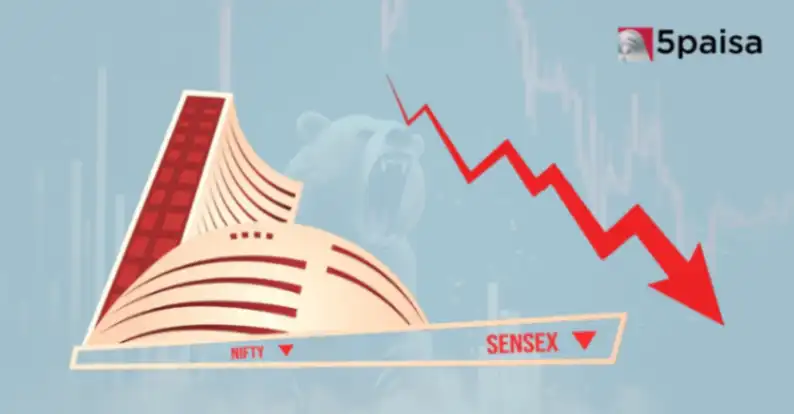Sensex Nifty Live Updates December 10: Gift Nifty Up, VIX Eases; DII Buying Offsets FII Selling
IT Sector: Acceleration, Slowdown or Recession

Last Updated: 13th December 2022 - 12:16 pm
The current phase of the IT sector is interesting where the attention has shifted towards recession scenarios even as current demand is extremely strong.
Worsening economic activity is a hot topic for discussion, however, the demand scenario for IT services continues to be good. From a vendor perspective, good demand indicators are the number of open positions, the size of the sales funnel, the pace of hiring, and the offer-to-joining ratio.
In May 2022, the US tech labor market was incredibly tight with an unemployment rate of 2.1%. The strength in demand is at odds with the declining macro data points. According to the IT companies, they can grow faster but due to talent unavailability, the situation has stayed unchanged.
But what if there is a recession…
The impact on companies will depend on whether it is a shallow recession or a deep recession. There are points that are different for Indian IT relative to past recessions, which will augment their defensive characteristics and limit the extent of multiple deteriorations in a recession.
A recession, in case it happens, will be in the midst of massive systems and tech-upgrade cycle. Options for clients are either to elongate the transformation journey or abandon it midway. The latter option looks less likely. Clients may achieve the transformation journey through funding creation from cost take-out services. Irrespective, the important point is that IT spending growth will continue to remain above normalized levels as clients progress towards the transformation journey, even as there may be an odd year or two of below-trend level growth.
In each recession in the past, the business models of India-heritage vendors were dismissed as either labor arbitrage like in the dot com bubble or not being digital enough like in Covid 19 recession. Those concerns have been made redundant by Indian heritage vendors through constant evolution in capabilities, large-scale localization programs, and success in digital transformation programs without losing sight of creating a strong value proposition for clients in traditional services.
In effect, the tech spending cycle wave is in favor of IT companies, Street’s perception is a lot better on the robustness of business models and payout ratios are high that can provide yield protection.
Sector leaders in the past cycles were Infosys (2008) and TCS (2021). A slowdown state brings in elements of indecision in an IT organization. The business may be reasonable but not strong enough to push through rate increases, while supply-side challenges reduce but gradually. Organizations are also not sure about the pace of investments, bench, etc. in a slowdown situation. Corrective measures cannot be taken on the supply side. In short, there is no immediate leverage for margins, while revenues slow down.
On the other hand, a shallow and swift recession leads to clearer priorities for clients (after an initial pause) on outsourcing decisions and programs to retain/shelve. From a vendor standpoint, a recession can cool off the high attrition faced by all IT players, allow much-needed rationalization to the cost structure and allow vendors to improve execution, something that has suffered in the recent phase of growth.
Further, a recession can allow vendors to expand profitability. While demand for cost savings increases from clients (or pricing is under pressure) during the recession, the impact is offset by the pullback in variable compensation and Rupee depreciation.
Growth in the past two years was broad-based and driven by elevated client spending and vendor capacity constraints. A tightening environment will mean that the easy growth or benefit of low-hanging fruits will fade. In fact, growth will be a lot more polarized. The criteria for winners/losers will depend on the quality of delivery and CSAT during the past two years. The type of vendors in Tier 1 are: (1) at risk of getting consolidated out of large programs, (2) nature of capabilities- companies that have full-stack capabilities will benefit from vendor consolidation deals and (3) mix of business. Companies that handle core systems of clients are less vulnerable as compared to vendors that manage programs at the periphery.
How each IT company will perform during a Recession:
TCS: Service line revenue mix is between discretionary and run-the-business (RTB) services that mirror global IT spending. Further, it has a diversified presence across verticals, and geographies, and have the ability to drive transformation agenda.
Supply-side is better sorted than peers. TCS is the most stable business as one heads into a slowdown. A high payout ratio helps. The business has high defensive characteristics. TCS is most likely to gain in vendor consolidation exercises. Thus, the TCS will not have much impact of recession or slowdown.
Infosys: Infosys has higher exposure to change spending. In general, it is perceived to be more vulnerable than peers in a situation of slowdown. However, this may not hold true anymore the company has a lower legacy drag compared to peers. More important, the company has hit a sweet spot on structuring large multi-year RTB deals that can act as a powerful countercyclical driver in case of a slowdown. Areas of concern are high attrition rates, especially among locals onsite and huge segmental margin volatility lends out mixed signals on large deal execution. Nonetheless, Infosys is the one to back even during the phase of a slowdown.
Wipro: The business mix of Wipro is alright at first look. However, there are a couple of points to take into consideration: exposure to discretionary spending has increased courtesy of CAPCO and Rizing acquisitions increasing the vulnerability quotient and the company has done a comprehensive refresh of talent. Further, it gained from low hanging fruit of turnaround in the first year. The difficult part starts after the first phase i.e. now.
HCL Technologies: HCL Technologies has a defensive portfolio of business in IT services. However high exposure to products and ERD offset the defensive part. The company has demonstrated good capability in structuring and executing large and mega-deals something that will come in handy during a slowdown. Overall a mixed bag.
Tech Mahindra: Tech Mahindra’s business mix may appear defensive. However, during a recessionary phase, engineering services, experience design services, and network services are all vulnerable to pull back in discretionary spending. These three offerings account for 30% of revenues. Further, the company is under-indexed in financial services and has high exposure to the manufacturing segment. Acquisitions have increased the risk profile. Telecom is defensive though. Overall, the company is more vulnerable than its peers.
Mphasis: Mphasis’ high exposure to financial services may turn out to be a blessing, high exposure to mortgage origination and refinancing business, notwithstanding. A good understanding of the core systems of clients in financial services positions the company well in consolidation decisions. The business of Mphasis may be more defensive than some Tier 1 companies.
L&T Infotech: L&T Infotech’s high exposure to financial services along with solid domain and depth of capabilities, positions the company well during a slowdown. The risk is entirely due to normal integration risks related to M&A which are manageable.
Mindtree: Mindtree has high exposure to small discretionary programs. Also, it is more vulnerable than peers due to exposure to long-tail of accounts.
L&T Technology Services: The execution is strong, and risks are largely external. ERD business is project-based and vulnerable during the slowdown.
- Performance Analysis
- Nifty Outlook
- Market Trends
- Insights on Market
Trending on 5paisa
Market Outlook Related Articles
Disclaimer: Investment in securities market are subject to market risks, read all the related documents carefully before investing. For detailed disclaimer please Click here.

 5paisa Capital Ltd
5paisa Capital Ltd
 5paisa Capital Ltd
5paisa Capital Ltd



